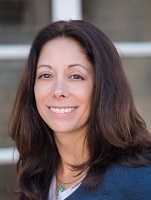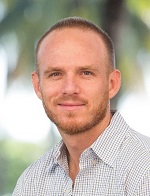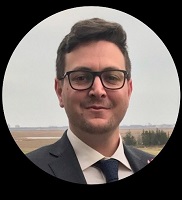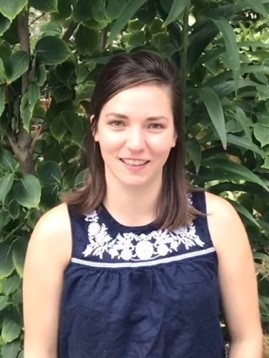Apply now to join our next cohort of Community Science Fellows and Community Leads!

Photo credit: Charlie Crawford
Project Title: Establishing Greenhouse Gas Targets to Inform Climate Action Planning
Location: Boynton Beach, Florida
To effectively use existing community-wide greenhouse gas data to establish appropriate GHG emission targets and inform updates to the City’s Climate Action Plan, specifically designating priority, high-impact reduction strategies. Additionally, develop a visual tool to show the differences between a ‘business as usual’ scenario in contrast to achieving the GHG reduction targets.
The community worked with Eva Kostyu, a September 2019 Thriving Earth Exchange Community Science fellow to develop the project scope. This included 2 scoping conference calls over 2 months. Calls were facilitated by Eva. Questions included themes of defining the project, logistical details, and plans for community impact.
The community leaders and Eva discussed additional iterations of the project scope via email and a complete project scope was developed with a concise write-up that connects all the moving pieces of the project.
This process helped the team refine and define their project objectives. Soon after, the community leaders realized that the work they had scoped for this Thriving Earth Exchange community science project could be completed quickly in-house. The team decided to close the project there and found inputs from a volunteer scientist unnecessary at this time.
Because of engaging in the scope part of the Thriving Earth Exchange process, Boynton Beach has a clearer path forward on this priority and they’re moving forward with in-house resources and external resources from ICLEI.
The team is drawing on collaborative partnerships with consultants at SustainaBase and partnership with ICLEI. The team is flexible in understanding that they may not complete the project in the linear nature outlined in the project description, however, the planned outputs are not expected to change. They encourage other communities to explore the ICLEI forecasting tools and resources/technical assistance provided by ICLEI.
The team’s feedback for other communities looking to get involved in Thriving Earth Exchange:
“We decided to switch gears and do this project in house because of the deadline to complete the Climate Action Plan by March 2020. We plan to engage [Thriving Earth Exchange] for another project at a later date. The main thing we would do differently is scope out a project that does not have a specific deadline. We will consider a project that is a deep dive into a particular subject area to enhance our ongoing efforts in sustainability/resiliency. We think that reviewing the annual “Impact Updates” tables is a great place to start to decide on a topic, and we recommend that others look at these tables as a starting point.”
The team is actively working on the project and will be continuing without a community scientist. Using the existing GHG emission inventories from SustainaBase, the team is uploading the emissions data into the ICLEI ClearPath Tool. Once the data upload is complete, they will include a write-up of existing data, trends and methodology in the City’s Climate Action Plan. They will then use resources provided by ICLEI to create the visual tool demonstrating a business as usual scenario, including the incorporation of data regarding projected population and economic growth for the city. Using the planning module of the ClearPath Tool and technical assistance from ICLEI, the team plans to quantify the GHG reduction strategies listed in the Climate Action Plan.
Expected Outputs:
Impact:
As the project is ongoing, the impact is not yet known. The team hopes that the GHG targets, visual tools for data presentation, and prioritization of reduction strategies developed through the project will aid in updating the Climate Action Plan for Boynton Beach. Additionally, the team hopes to use the data-supported visual tools for communication with the Boynton Beach community and the City to help reach GHG emission targets.
Boynton Beach is a coastal community located in southern Palm Beach County, Florida with a population of approximately 75,000 people. The community is racially and ethnically diverse and prides itself on inclusivity. Boynton Beach includes several miles of the Intracoastal Waterway and 253 acres of municipal parks, beach and conservation lands. Boynton Beach released its first Climate Action Plan (CAP) in 2010, joined the Southeast Florida Regional climate Change Compact in 2012, participated in the Resilience Dialogues in 2017, and joined the Global Covenant of Mayors for Climate and Energy (GCoM) in 2018. Boynton Beach is also partnering with nearby coastal communities to begin to assess vulnerability to sea level rise and other impacts of climate change. The City is working to continue climate action planning, of which greenhouse gas (GHG) emission inventory and reduction is a major component.
The city has GHG inventory data for government operations dating back to 2006 with 4 years of complete data up to the present. The City also has community-wide GHG inventories for 2015 and 2017. The City’s goal is to complete both community-wide and municipal GHG inventories on an annual basis going forward. The 2010 CAP set a GHG reduction target for government operations of 27% below 2006 levels by 2035, and inventory data indicate that the City is currently on track to meet or exceed this target. The City has not yet established a community-wide GHG reduction target.
The city aims to release an updated, working draft of the CAP in early 2020, with GHG emission reduction strategies delineated into three general categories to align with the GHG inventory data: Transportation, Buildings, and Waste. The current CAP draft includes government and community-wide strategies for GHG reduction, as well as a summary of actions taken thus far. The city recently began to use the ICLEI-Local Governments for Sustainability ClearPath tool for further analysis of inventory data and to facilitate development of GHG targets. Boynton Beach aims to create community-wide GHG reduction targets to include in the CAP and to achieve compliance with the GCoM.
The community team of Boynton Beach would like to partner with a scientist to establish GHG reduction targets that are rooted in scientific evidence and aligned with international standards. Establishing attainable and scientifically based reduction targets will assist the community in prioritizing reduction strategies and help validate future monitoring of their progress. The team would like to use tools within ICLEI’s ClearPath platform (e.g., Forecasting, Planning, and Monitoring tools) to develop a “business as usual” model scenario, project the impacts of select GHG reduction strategies, and integrate these analyses to identify potential pathways to meet the recommended science-based targets.
After reviewing the City’s existing data and science-based targets, the scientist will be asked to identify which of the existing drafted community reduction strategies (in the CAP) will have the highest impacts in helping to achieve emissions reductions at the community level within each category (Transportation, Buildings, Waste). They will use the ClearPath tools to quantify the impacts of the selected strategies and integrate these projected GHG reductions with the business as usual scenario to establish reduction pathways. Results of this analysis will be used to help the city to prioritize sustainability strategies and actions, and as a communication tool to explain and validate the GHG reduction targets to community stakeholders.
The focus of this Thriving Earth Exchange project will be on community-wide inventory data and strategies, with the possibility of a phase 2 to focus specifically on municipal reduction targets and strategies. Within the scope of this project, Community Leaders envision a potential 4-part process:
1st: Review the City’s existing GHG data, specifically the community-wide inventories. The scientist will be given access to existing data via the SustainaBase online platform.
2nd: Review science-based GHG reduction targets recommended by the Intergovernmental Panel on Climate Change (IPCC) and the City’s preliminary targets of 35% reduction by 2035 and 80% by 2050 for both municipal and community-wide emissions. Determine which year of existing data to use as a baseline for management/analysis of the reduction goals and future progress monitoring. The community would like to align with existing benchmarks in other cities and international standards.
3rd: Review list of community-wide GHG reduction strategies and actions in the City’s draft CAP and identify up to 5 high-impact reduction strategies within each emission category (Transportation, Buildings, Waste). Identified actions or targets should be quantifiable in terms of estimated GHG reductions (for example, numbers of rooftop solar installations, reduction in vehicle miles traveled through provision of an electric trolley service, food waste reduced through a composter giveaway program, etc.) These measures should be vetted by the community team to confirm that they are potentially achievable in Boynton Beach within the specified time frame.
4th: Use ICLEI’s ClearPath Forecasting and/or Planning tools to create a “business as usual” scenario for community-wide GHG emissions (consider population growth and macro sustainability trends such as FPL grid changes, EV market projections, etc.). Then quantify projected impacts of the selected actions/targets identified in Step 3, and integrate this analysis with the business as usual scenario to create one or more potential pathways to meet the science-based targets.
Project Outputs (for steps 1-4):
Rebecca Harvey is the Sustainability Coordinator for the City of Boynton Beach, FL and will serve as the main point of contact for the project. Rebecca is collaborating with Holly Lichtenfeld, a member of the City’s Sustainability Advisory Team, Eric Marmer, a Buyer in the City’s Financial Services Department, and Matt Zirkelbach, who is contracted by the City to complete the GHG inventories and manage the data within the SustainaBase platform.
 Rebecca Harvey brings 20 years of experience as an environmental researcher and communicator to serve as the City of Boynton Beach’s first Sustainability Coordinator. A California native, she studied at the University of California-San Diego and the University of Wisconsin-Madison, where she completed two Master’s degrees in Sociology and Environmental Studies. Ms. Harvey’s academic research focuses on relationships among environmental beliefs, attitudes, experiences, and behaviors; she has published eight peer-reviewed articles and numerous outreach publications on diverse subjects including invasive species management, carnivore conservation, ecotourism, and climate change adaptation. She is a trained Climate Reality Leader, a volunteer with Citizens’ Climate Lobby, and a mother of two young kids who often thinks about how climate change will affect future generations.
Rebecca Harvey brings 20 years of experience as an environmental researcher and communicator to serve as the City of Boynton Beach’s first Sustainability Coordinator. A California native, she studied at the University of California-San Diego and the University of Wisconsin-Madison, where she completed two Master’s degrees in Sociology and Environmental Studies. Ms. Harvey’s academic research focuses on relationships among environmental beliefs, attitudes, experiences, and behaviors; she has published eight peer-reviewed articles and numerous outreach publications on diverse subjects including invasive species management, carnivore conservation, ecotourism, and climate change adaptation. She is a trained Climate Reality Leader, a volunteer with Citizens’ Climate Lobby, and a mother of two young kids who often thinks about how climate change will affect future generations.

Holly Lichtenfeld has worked on sustainability, the environment and climate change issues for 20+ years. She served on the board of the Northern California Solar Energy Association and led marketing for a solar energy company that did high impact installations including ones at Googleplex. She also co-founded CleanWell, a green chemistry company that replaces toxic disinfectants with safe alternatives. She currently works with companies, organizations and governments in renewable energy, energy efficiency, and other areas that reverse climate change. She is a Climate Reality Leader who educates others through presentations at Florida Atlantic University and other venues.

Matt Zirkelbach is an entrepreneur driving success and organizational value through sustainability. He is the president and co-founder of RunBrook and SustainaBase. RunBrook helps multifamily and production home builders navigate various green building rating systems and ordinances, provides blower door testing and Home Energy Ratings, and helps obtain incentives to offset costs. SustainaBase is a web-based platform helping governments and corporations set and track sustainability goals through collection and management of key data. Under Matt’s leadership and decades of experience, his companies have certified and tested thousands of residential units and secured millions in energy tax incentives and cost-savings. Through his vision and proprietary technology, he has also helped numerous governments and companies collect, analyze and report carbon performance, water use and other key metrics crucial to meeting their sustainability goals. Matt holds a masters and bachelor’s degree in Environmental Science, as well as numerous building energy and sustainability certifications (CLASS 1 RESNET HOME ENERGY RATER, LEED FOR HOMES AP, LEED FOR HOMES GREEN RATER, FGBC CERTIFYING AGENT, NGBS GREEN VERIFIER).

Eric Marmer has a Master’s Degree in Public Administration from Florida Atlantic University and works as a Senior Buyer in the City of Boynton Beach’s Financial Services Department. Prior to joining the City Eric worked for the Washington Institute for Near East Policy. Eric produces his own policy/political podcast called Restore the Union where he interviews subject matter experts on major issues the United States is facing today. In his free time he enjoys reading and taking his two Australian Shepherds to the dog park.

Eva Kostyu works at AGU as a Program Specialist in the Publications department, working with the various stakeholders involved in the peer-review process for AGU journals. Prior to joining AGU, Eva worked as a case manager at a transitional housing program for homeless families in northern Virginia, working with the families to attain self-sufficiency. She has a B.A. in sociology/anthropology from Carleton College and is excited to learn more about Community Science through the Fellowship. When not at work, Eva enjoys reading, hanging out with her cat and trying to grow an apartment garden.

(c) 2024 Thriving Earth Exchange